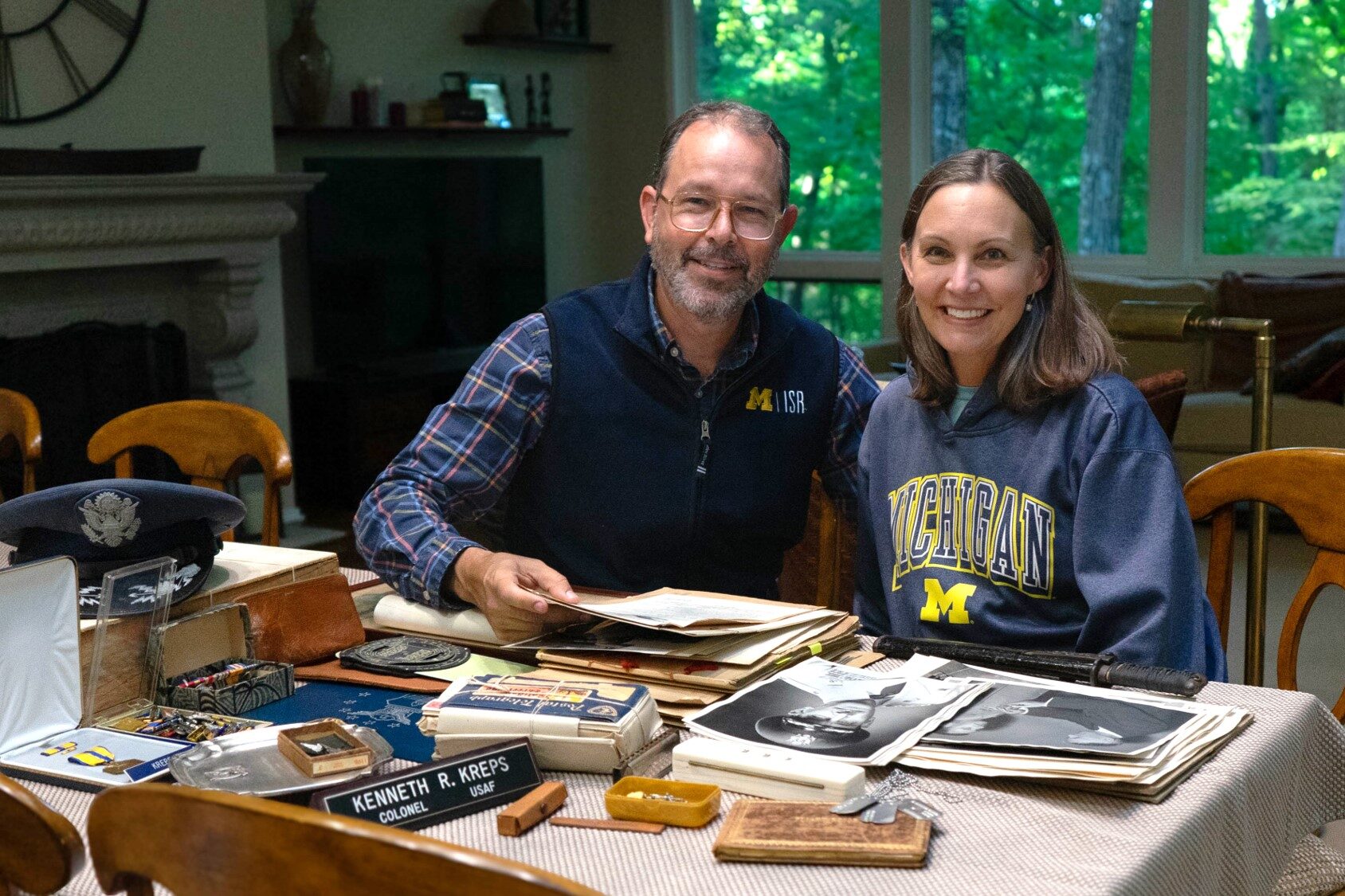A family’s quest for a hero’s ‘war chest’

From undisclosed honors to covert operations, the valiant military exploits of Colonel Kenneth Kreps were veiled in secrecy until a fateful discovery by his descendants. Witness the unveiling of a World War II hero’s saga as his family unpacks a long-lost treasure trove of historic memorabilia.
-
New U-M studies challenge widely held beliefs, published research on women in the workplace
Justin Frake is interested in cause-and-effect relationships in real-world data and the hidden dynamics that shape workplace behavior and eq uality — or inequality, as the case might be. His curiosity has led to research whose findings challenge some popular beliefs related to women in the workforce.
-
U-M-led Apple Hearing Study reveals prevalence of tinnitus
About 78% of participants in the Apple Hearing Study, conducted by researchers at U-M, have experienced tinnitus — the perception of sound that others do not hear. The study focused on the demographics and characteristics of people with tinnitus to inform future research on potential treatments.
-
Count your blessings: It often happens when others help, not self-achieved
If you focus on overcoming life’s barriers rather than the blessings that make life easier, you’re not alone. A new University of Michigan study indicated that people aren’t always good at noticing the advantages they enjoy compared to the disadvantages they overcame.
-
Most local officials support rooftop solar, a majority opposes nuclear power
Michigan’s local leaders overwhelmingly support adding rooftop solar infrastructure in their communities, while a majority strongly oppose developing nuclear power. According to the Michigan Public Policy Survey, 86% of local government leader respondents either strongly or somewhat support adding rooftop solar panels.
-
U.P. Scholars Program makes U-M degree a reality
Adjusting to Ann Arbor was easier with help from the U.P. Scholars Program, which provides need-based scholarships for limited-income students of up to $15,000 per year for four years. The program also provides social, academic and professional support.
-
AI chips could get a sense of time
Timekeeping in the brain is done with neurons that relax at different rates after receiving a signal; now memristors—hardware analogues of neurons—can do that too. Artificial neural networks may soon be able to process time-dependent information, such as audio and video data, more efficiently.
Columns
-
President's Message
Eureka! A look at the knowledge ecosystem
With $1.86 billion in research funding, U-M is leading the way in everything from energy solutions to artificial intelligence. -
Editor's Blog
A crisis by any other name…
You know what they say about opportunity. It knocks but once before the door slams shut. -
Health Yourself
So much for farm to table … We’ve got lab to table now
Who's ready to eat chicken that scientists 'hatched' in a lab and not from an egg? -
Climate Blue
How to keep your head above uncharted waters
Ricky Rood says goodbye to Floodtown as he guides us through the changing climate.
Commemorating an exceptional presidency
Fifty years ago, at a time of great division and turbulence in the U.S., Gerald R. Ford was sworn in as the 38th president of the United States. President Ford’s legacy is very much alive at the Ford School of Public Policy. This slideshow is inspired by the school’s recent tribute, “A life of public service,” in the Spring 2024 issue of State & Hill magazine. As noted by the editors, the values that distinguished Ford remain highly relevant to policy students today: his lifelong commitment to principled public service, his integrity, and his ability to connect across differences to forge consensus.



















